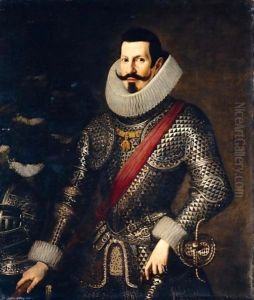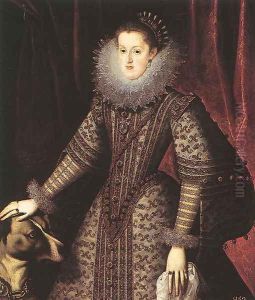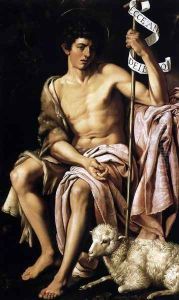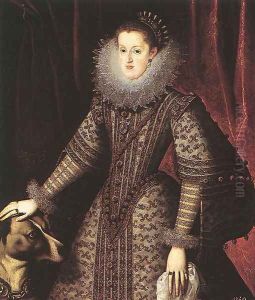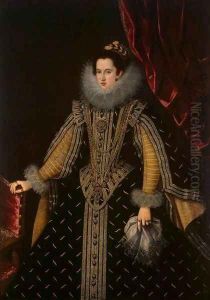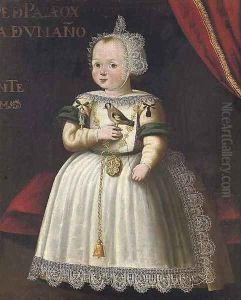Bartolome Gonzalez Y Serrano Paintings
Bartolomé González y Serrano was a prominent Spanish painter who played a significant role in the early 17th century Spanish court, particularly during the reign of King Philip III. Born in 1564 in Valladolid, Spain, his early life is not well-documented, but it is known that he moved to Madrid to further his career and gain the patronage of the Spanish court. González was primarily known for his portraits, which were highly regarded for their attention to detail, depiction of fabric and texture, and the portrayal of his subjects with dignity and grace.
González's career flourished in the Spanish court, where he became one of the preferred portrait painters. His ability to capture the likeness and personality of his sitters made him a favorite among the nobility. In addition to portraits, he also painted religious subjects and mythological scenes, though these works are less known and studied compared to his portraits. His style was influenced by the Italian Renaissance, which he combined with the Mannerist tendencies prevalent in Spain during his time, resulting in a unique blend that was both elegant and sophisticated.
Despite his success, there are relatively few surviving works definitively attributed to González, which makes a comprehensive assessment of his oeuvre challenging. However, his contributions to Spanish portraiture and the development of court painting in early 17th century Spain are well recognized. Bartolomé González y Serrano's legacy is that of a skilled portraitist who captured the essence of the Spanish Habsburg court with finesse and precision. He died in 1627 in Madrid, leaving behind a body of work that continues to be appreciated for its artistic quality and historical significance.
